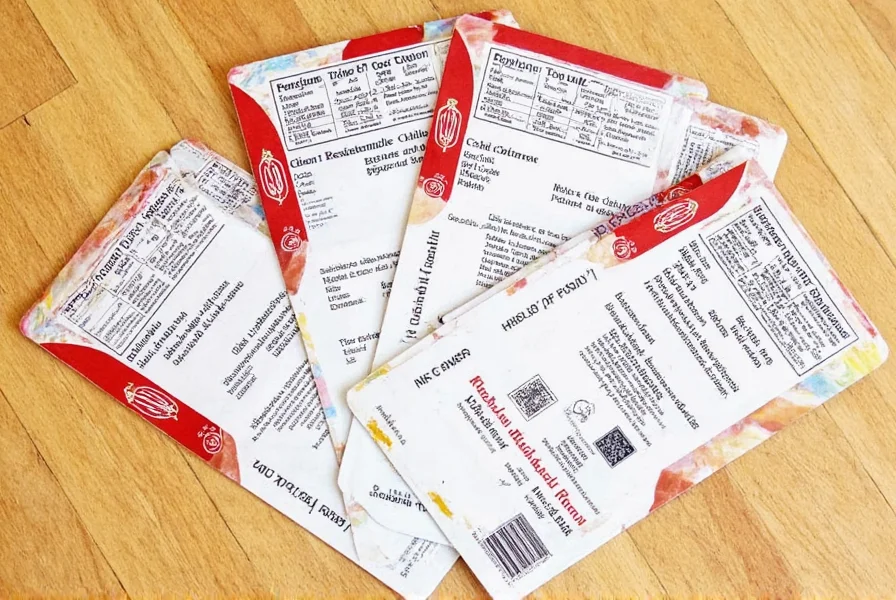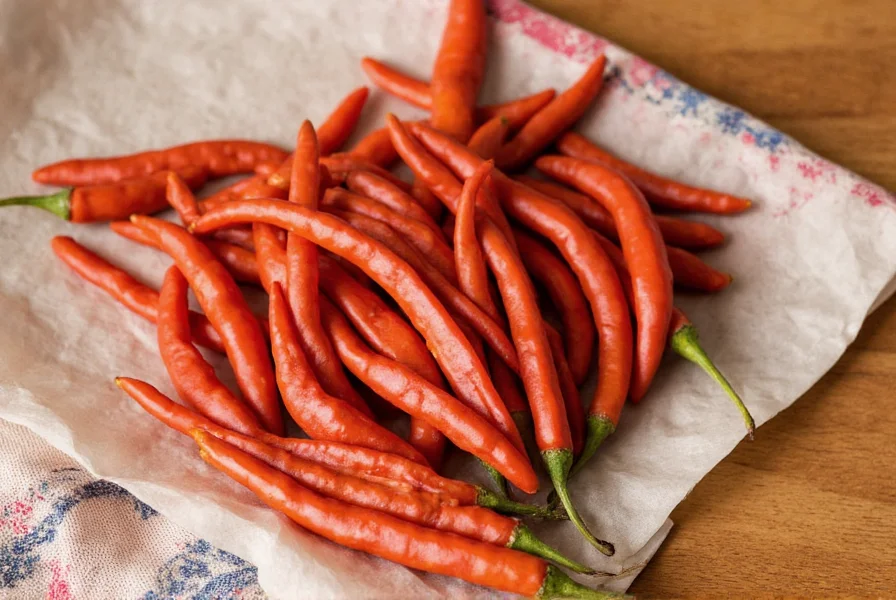Chile California Seco: The Unsung Hero of Mild Heat and Deep Flavor
If you’ve ever tasted a rich red enchilada sauce or sipped on a smoky bowl of posole and wondered, "What gives it that earthy warmth?", chances are the secret ingredient is none other than the Chile California Seco. This humble dried chili might not scream for attention like its fiery cousins, but once you get to know it, it’ll become your go-to flavor booster in the spice rack.

Table of Contents
- What Is Chile California Seco?
- Flavor Profile & Heat Level
- Top 5 Culinary Uses
- Buying Guide: How to Choose the Best Chile California Seco
- Storage & Shelf Life Tips
- Common Mistakes to Avoid
- Frequently Asked Questions (FAQs)
- Conclusion
What Is Chile California Seco?
The Chile California Seco — also known simply as California chile or dried Anaheim — is a mild chili with deep roots in Mexican and Southwestern cuisine. Originally cultivated in New Mexico and later popularized in California, this pepper starts off green when fresh and turns a rich red-orange when dried.
Despite its name, it's more commonly associated with Mexican cooking traditions than Californian ones today. It’s prized for its versatility and subtle heat level, making it perfect for those who want flavor without the burn.
Botanical Background
- Scientific Name: Capsicum annuum
- Heat Level: 500–2,500 SHU (Scoville Heat Units)
- Alternate Names: Dried Anaheim, Chile Ancho (though technically different), California Wonder
Flavor Profile & Heat Level
The Chile California Seco offers a balanced blend of sweetness and spice. Its flavor can be described as slightly nutty, earthy, and mildly sweet, with just enough heat to warm your palate without overwhelming it.
| Characteristic | Description |
|---|---|
| Heat Level | Mild to Medium (500–2,500 SHU) |
| Flavor Notes | Earthy, Nutty, Slightly Sweet |
| Texture | Dry, Papery |
| Best Used In | Sauces, Soups, Stews, Marinades |
Compared to other popular chilies:
- Jalapeño (fresh): Similar heat range, but less complex flavor when dried.
- Ancho (dried poblano): Sweeter and darker in color, with deeper fruit notes.
- Pasilla: Often confused with California Seco; it has a more raisin-like flavor and slightly more heat.
Top 5 Culinary Uses
Here’s how to make the most of your Chile California Seco in the kitchen:
- Red Enchilada Sauce: Toast the chilies, blend with garlic, onion, tomatoes, and broth for a classic base.
- Posole Soup: Infuse the broth with rehydrated California Seco for a smooth background heat.
- Marinades: Add ground or soaked chilies to marinades for meats and vegetables.
- Adobo Pastes: Combine with vinegar, garlic, and spices to create a flavorful adobo.
- Infused Oils: Simmer dried chilies in oil to infuse a gentle spiciness into dressings or drizzles.
Buying Guide: How to Choose the Best Chile California Seco
Whether you’re shopping at a local mercado or browsing online spice stores, here’s what to look for when selecting quality Chile California Seco:
Features to Look For
- Bright Color: A vibrant reddish-orange hue indicates freshness.
- Firm Texture: Should be pliable but not brittle or overly soft.
- Whole Peppers Preferred: Avoid broken or crumbled pieces unless purchasing pre-ground powder.
- Aroma: Earthy, slightly sweet smell—no mustiness or mold signs.
Product Comparison Table
| Product | Brand | Form | Key Features | Best For | Occasions |
|---|---|---|---|---|---|
| California Wonder Whole | NuMex Organics | Whole dried | Organic, sustainably grown | Cooking from scratch | Everyday meals, family dinners |
| California Seco Ground Powder | La Casa del Chile | Ground | Convenient, no prep needed | Quick seasoning, rubs | Grilling, tacos, snacks |
| Mixed Dried Chile Pack | SpiceRoad Blends | Assorted | Includes California Seco + others | Experimentation, variety lovers | Cooking classes, gifts |
Storage & Shelf Life Tips
Proper storage ensures your chilies keep their flavor and potency:
- Airtight Container: Store in a sealed glass jar or zip-lock bag away from light and moisture.
- Cool, Dark Place: Pantry or cupboard works best; avoid humid areas like near the stove.
- Freezer Option: For long-term storage, freeze whole or ground chilies in vacuum-sealed bags.
- Shelf Life: 6–12 months for optimal flavor; longer if frozen.
Common Mistakes to Avoid
Even seasoned cooks sometimes mishandle dried chilies. Here’s how to steer clear of common pitfalls:
- Not Toasting Them First: Toasting enhances flavor depth. Don’t skip this step!
- Using Too Many Seeds: While edible, seeds add heat. Remove them for milder results.
- Skipping Rehydration: Unless grinding or using in dry rubs, soak or steam the chilies before blending.
- Ignoring Freshness: Stale chilies taste flat. Always check aroma and color before use.
Frequently Asked Questions (FAQs)
Can I Substitute Chile California Seco with Another Chili?
Yes! If you’re looking for similar flavor and heat, try Pasilla, Guajillo, or even mild Ancho peppers. Adjust quantities based on desired heat level.
Are Chile California Seco and Anaheim Peppers the Same?
Essentially yes. When Anaheim peppers are dried, they are often called Chile California Seco or simply “dried California chiles.”
Is Chile California Seco Gluten-Free?
Yes, naturally gluten-free. Just be cautious with pre-packaged products that may contain additives or seasonings.
How Do I Use Chile California Seco in Vegan Cooking?
It’s great in vegan stews, lentil dishes, or roasted vegetable sauces. Try blending it with cashew cream for a spicy vegan crema!
Conclusion
The Chile California Seco might not be flashy or ultra-spicy, but it’s the kind of spice that builds flavor from the shadows — quietly enhancing every bite without stealing the spotlight. Whether you're simmering up a pot of traditional mole or jazzing up a simple bean dish, this chili deserves a permanent spot in your pantry.

So the next time you reach for something mild yet deeply flavorful, remember the Chile California Seco — your kitchen’s secret weapon for bold, balanced spice without the burn.










 浙公网安备
33010002000092号
浙公网安备
33010002000092号 浙B2-20120091-4
浙B2-20120091-4